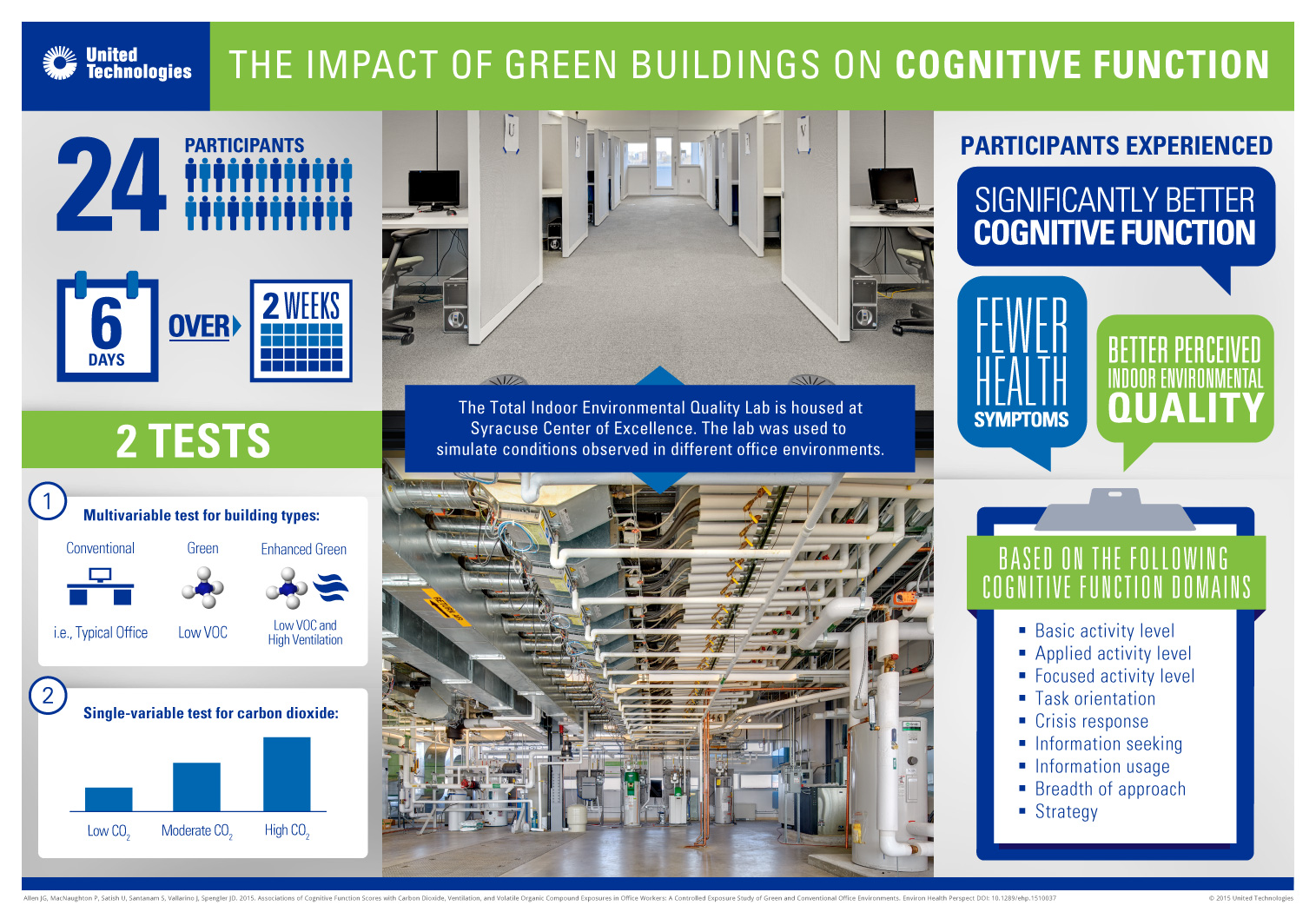Why Healthy Buildings Should Be a Big Thing on the CRE Agenda
As developers are investing more and more in green building, those that are already in the front lines of sustainability are taking on a new challenge: healthy walls.
By Alexandra Pacurar
 Climate change, costs and human health are the key factors behind green building, but as the first two have dominated the development industry so far, it’s now time to focus on the latter. Harvard T.H. Chan School of Public Health has made the subject of “how buildings influence health” the object of several studies, research programs and even courses. The results are relevant enough to make the key players in real estate stop and listen.
Climate change, costs and human health are the key factors behind green building, but as the first two have dominated the development industry so far, it’s now time to focus on the latter. Harvard T.H. Chan School of Public Health has made the subject of “how buildings influence health” the object of several studies, research programs and even courses. The results are relevant enough to make the key players in real estate stop and listen.
According to Harvard research, human capital costs typically account for 90 percent of business operating costs, and most people spend 80-90 percent of their time indoors. Also, one of the health school’s courses entitled “Building for Health” discusses the connection between the built environment and some of the public health concerns of society today—from asthma to cancer and obesity.
Therefore, the built environment has the potential to deeply impact a company’s greatest asset—people. Harvard’s Center for Health and the Global Environment has launched the Nature, Health & the Built Environment program aimed at providing well-documented information for those who influence the way buildings and cities are designed. This information is actually evidence-based research and recommendations for policymakers, public health officials, architects, urban planners, landscape designers and anyone who can make decisions in order to support our health and our planet’s health.
The research completed through this program shows that the quality of indoor spaces (temperature, humidity, noise, light, space, air quality) affects not only people’s health, but also their productivity. One of Harvard’s most recent studies shows that green buildings positively affect the cognitive function. The results were quite impressive. As it turns out, cognitive scores were 61 percent higher for people that worked in green building conditions and 101 percent higher for those in enhanced green building conditions compared to people who worked in conventional buildings.
The study concluded that “green buildings design that optimizes employee productivity and energy usage will require adopting energy efficient systems and informed operating practices to maximize the benefit to human health while minimizing energy consumption.” Similar studies have also been conducted by other prestigious academic institutions such as Cornell University.
One of the most popular recommendations in connection to this subject is ensuring a regular access to nature by including natural elements in a building’s design. This can mean green walls, waterscaping or interior green patches. This alone is thought to help us think more clearly, reduce stress levels and improve our general physical health.
In a recent conversation with Sara Neff, senior vice president at Kilroy Realty Corp., the top executive and green building advocate, explained that one of her long-term goals is making Kilroy an industry leader when it comes to health. Neff is responsible for making Kilroy the most sustainable real estate company in North America. This title has been officially awarded to the company by GRESB three years in a row, starting in 2014. “We will be even more focused on health, because I believe that people think about the food they eat—we care a lot about the ingredients in our food—but our buildings have a huge impact on our health and I don’t think people notice,” Neff said. Neff is confident that the consumer market will react to this soon. “I think it’s starting now. We have important studies on this coming out, especially out of Harvard. I hope I will be on the forefront of, for example, giving tenants real time monitoring of their indoor air quality, really optimizing temperature and conditions and that sort of thing,” she added.
While green building is still far away from being the standard in real estate development, it is believed to be a more and more common demand and requirement coming from clients everywhere in the world. Still, there is no need to wait for standards to be re-established and consider health as a major factor for further projects. Commercial or otherwise.
Infographic courtesy of Harvard








You must be logged in to post a comment.